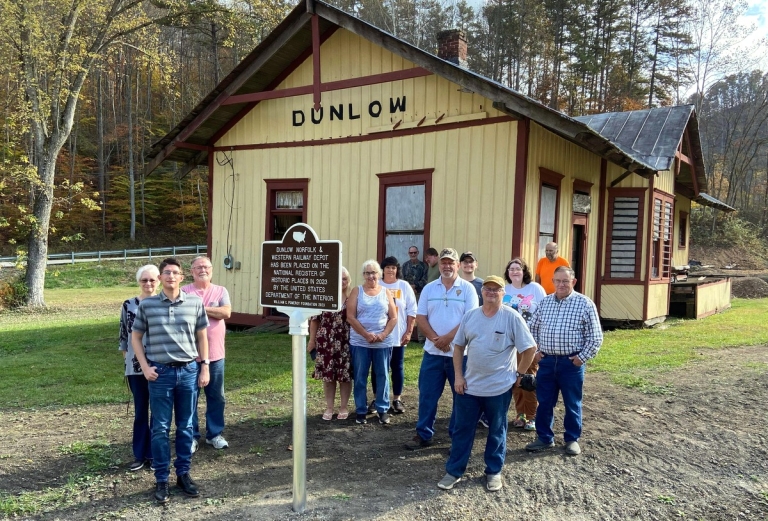
CHARLESTON, W.Va. — Seventeen new historic sites have been added to the National Register of Historic Places in West Virginia in 2023, spanning every corner of the state and including schools, churches, farms, historic districts, and some 379 individual resources.
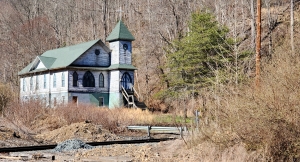
According to data from the West Virginia State Historic Preservation Office, they join a growing inventory of more than 1,100 sites nominated to the register in the Mountain State since the program was initiated in 1966.
Register listing is primarily an honorary designation, though listed properties may be eligible for grants and tax credits for historic rehabilitation and preservation. Several sites nominated this year were done so to access these financial incentives.
James Osbourn Farm
Also known as Far Away Farm, this 120-acre property in Jefferson County was the epicenter of the Battle of Shepherdstown on September 19-20, 1862. Union and Confederate forces, reeling from the Battle of Antietam two days earlier, engaged in artillery duels on both sides of the Potomac River. A cannonball is still lodged in a wall of the farmhouse.
Tiskelwah School
Supposedly named after a Shawnee phrase meaning “river of fat elk,” Tiskelwah School operated in the West Side neighborhood in Charleston from 1910 to 2000. It also hosted health clinics for many years. Tiskelwah was nominated for its Second Renaissance Revival architectural design.
Dunlow Norfolk & Western Railway Depot
Constructed in 1891, this small, wood-frame train station in the community of Dunlow was one of several built along the Norfolk & Western Railway’s Twelvepole Line, which ran through central Wayne County. The train tracks and most stations are long gone, but the depot has been remarkably well-preserved since it closed in 1933.
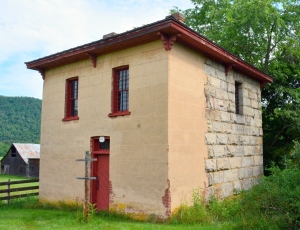
formidable 1882 stone jail building remains.
Huntersville Old County Jail & Clerk’s Office
The tiny community of Huntersville once served as the county seat of Pocahontas County until it was replaced by Marlinton in 1891. While Huntersville’s courthouse building is long gone, a formidable 1882 stone jail building and a small shed once used as the county clerk’s office remain. They sit on the former courthouse grounds, now a grassy field known locally as Courthouse Square. The site is owned and maintained by the community organization Huntersville Historical Traditions.
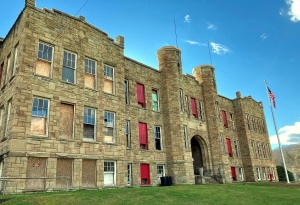
Calhoun County High School
Opening in 1923, this was the first and only high school in Calhoun County during its 75 years of operation. This imposing Collegiate Gothic sandstone building is only the second site in Calhoun County to be listed on the National Register. The school is owned by The 1982 Foundation, which hopes to adapt it into a mixed-use commercial, residential, and community center.
New Salem Baptist Church
This African-American church is the sole surviving structure from the Black mining camp at Tams. When the community was formed in the early 1900s, it was divided into different sections based on race and ethnicity. This beautiful Gothic Revival church was constructed in 1921 for the Black section of Tams. Today, the congregation numbers fewer than ten. Located in a remote area, it is a popular destination for ATV riders.
Eleanor Historic District
Encompassing the entire town of Eleanor and totaling 277 resources, the Eleanor Historic District is West Virginia’s most extensive nomination for 2023. The town was one of three planned New Deal resettlement communities established by the federal government in West Virginia during the 1930s and provided unemployed families with self-sufficient lifestyles. Participants were given a modest house, land on which to farm, and access to a cooperative dairy farm and canning facility, among other amenities. Most of the original homes built in 1934 still exist today.
Susan Thornton House
The Susan Thornton House in Jefferson County is an addition to the Nathan Haines Farm, which was added to the register in 2022. Thornton and her family were free Blacks whom the Haines family had formerly enslaved. After emancipation during the Civil War, they continued to work for the Haines family as hired laborers. In 1869, Thornton leased a small plot of land next to their Haines farm on which to build a home and live for the remainder of her life.
Mount Zion Missionary Baptist Church
This historically Black church was one of only two that served the African-American community in Fairmont in the early 1900s. For decades, it provided members with spiritual and social needs. It hosted lectures by the National Association for the Advancement of Colored People, and some members attended the March on Washington in 1963. Today, its congregation worships elsewhere, and members plan to use the original church building as a community center for classes, after-school activities, counseling, and other social services.
Valley Furnace
The community of Valley Furnace in Barbour County was named after this old charcoal-fired iron furnace, which was built around 1847 using local sandstone. It produced pig iron for shipment to the Monongahela River. The furnace had a relatively short life and shut down in 1855. Today the structure has partially collapsed but remains an impressive example of early industrial engineering in the Mountain State.
Waiteville School
In operation from 1950-1967, the Waiteville School in Monroe County represents the transitional period from one-room schoolhouses to the large consolidated schools in West Virginia today. The concrete, five-room school included mid-century design features such as large metal windows that provided ample natural light and ventilation. Since the 1970s, alumni and their families have used the building as the Waiteville Community Center.
First Baptist Church of Bluefield
Built around 1910, the former First Baptist Church of Bluefield in Mercer County is one of the city's most visually distinct religious buildings. A Victorian Eclectic-style landmark, the church is noted for its octagonal-shaped sanctuary and massive arched stained-glass windows. It is believed to be the only church in Bluefield that employed the Akron Plan, a 19th- and early 20th-century church floor plan that included individual Sunday School rooms surrounding the sanctuary in a wedge or fan shape.
Citizens National Bank Building
The youngest West Virginia site listed on the National Register this year, the Citizens National Bank in Martinsburg in Berkeley County represented the latest banking technology and design when it opened in 1970. It is a rare example of Brutalist-style architecture in downtown Martinsburg and employed concrete and glass to create a very modern look. A series of symmetrical concrete columns extending above the roofline is a particularly noteworthy feature. The county plans to redevelop the former bank into a regional history museum focusing on the Eastern Panhandle of West Virginia.
Paw Paw Old Mayor’s Office and Jail
This modest, three-room, wood-frame building in Morgan County served as the seat of government for the Town of Paw Paw from 1893 until 1977. The front portion was the mayor’s office, where town council meetings and local court cases were held. Two rooms in the rear were used as the “town lockup.” Now used to display historical artifacts, the landmark remains in excellent condition and is a charming example of small-town government in rural Appalachia.
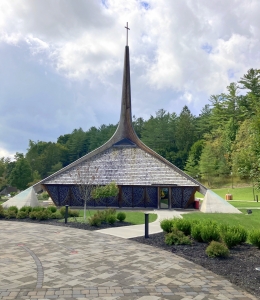
Davis & Elkins College Historic District
A previous Davis & Elkins Historic District was listed in 1996 and consisted only of an icehouse, gatehouse, and the Graceland and Halliehurst mansions. The new district encompasses the entire campus of Davis & Elkins College in Elkins, in Randolph County, and includes many more unique buildings, such as the 1970s postmodern style Robbins Memorial Chapel. Established in 1904, this private Presbyterian college is integral to the Elkins community.
Henry and Julia Hoard Stark House
This lavish, three-story Colonial Revival house of buff brick is one of the most impressive works of architecture in the Town of Ceredo in Wayne County. It was the longtime home of businessman, real estate developer, and philanthropist Henry J. Stark. Among other things, Stark was instrumental in creating Huntington Tri-State Airport. He and his sons were presidents of the First National Bank of Ceredo, long an extremely influential business in the community.
Downtown Parkersburg Historic District
Concentrated around Market Street and several adjacent blocks, the Downtown Parkersburg Historic District encompasses the core of Parkersburg’s surviving historic commercial buildings. The nomination includes dozens of buildings, several previously listed individually on the register. A diverse range of architectural styles and periods are represented, including the Romanesque Wood County Courthouse, the Neoclassical Revival Parkersburg National Bank Building, and the Modern Bureau of the Fiscal Service Building.
For more information on the National Register of Historic Places, or to view copies of the nominations, visit the West Virginia State Historic Preservation Office website.






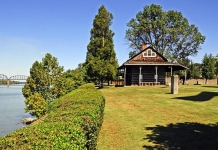
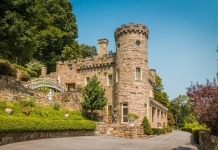
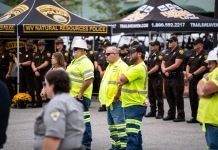
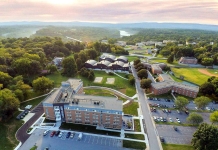
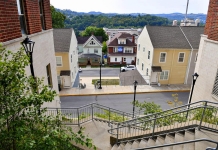
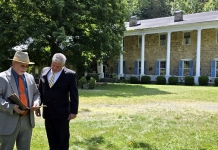
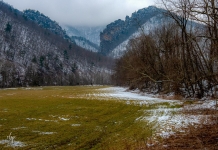
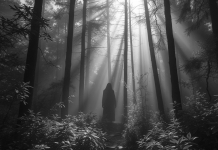

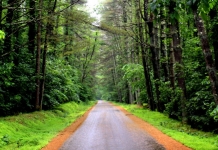
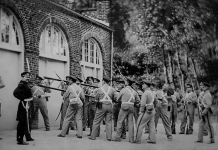







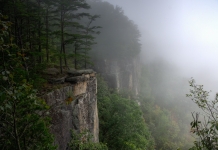




Facebook Comments